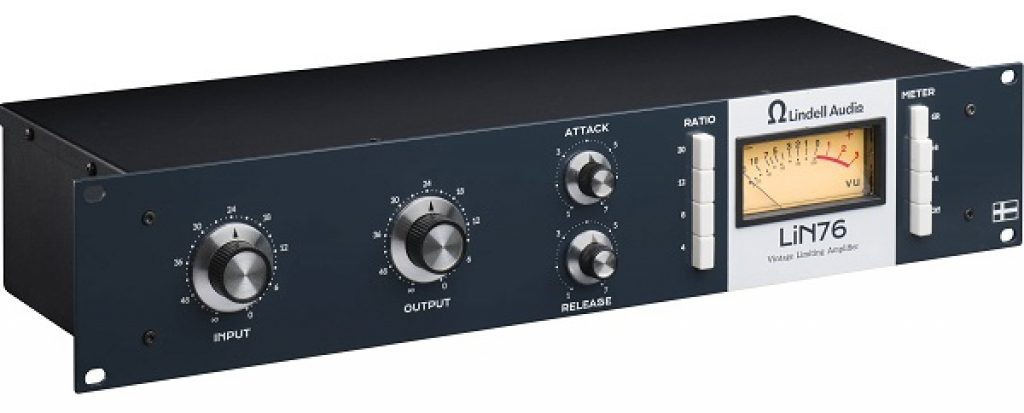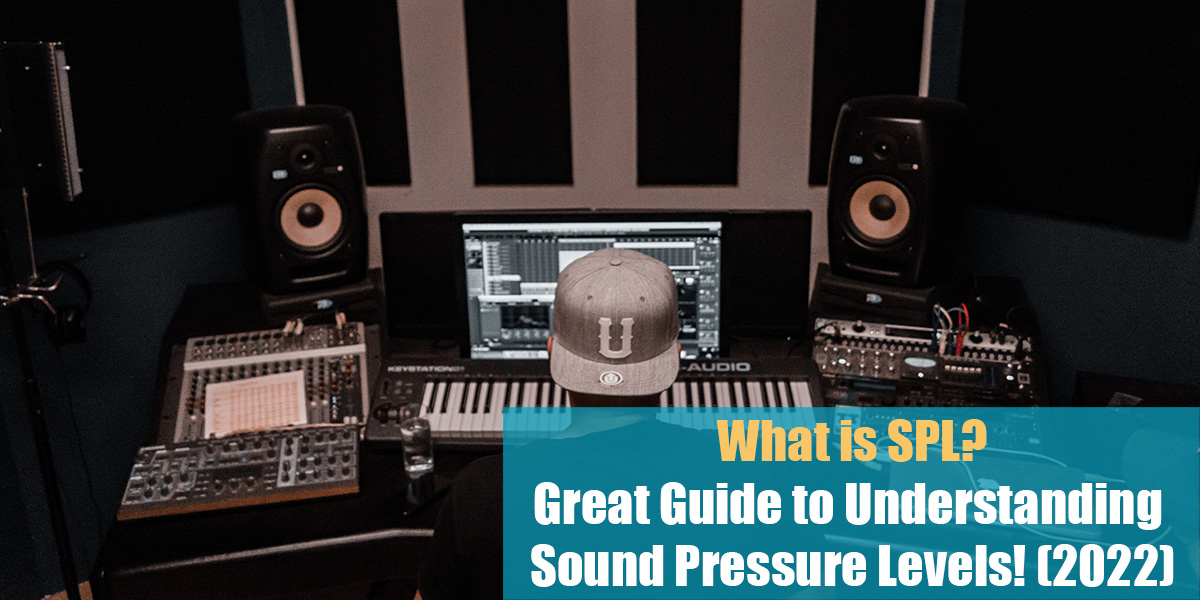Lindell Audio LiN76

- Format: 19″ / 2U
- Enclosure depth: 250 mm
- Weight: 8 kg
- Incl. external power supply (12V DC)
Lindell Audio LiN76 Review
Being one of the most used and abused compressors in the previous century, 1176 left an amazing list of epic records that were processed through it. And even we now consider it a vintage unit, it still finds its usage in modern music. The one downside about 1176 is that you can rarely find an original one now, and if you find one – it will probably cost a small fortune
That’s why many developers are recreating this unique model in their own facilities and trying to emulate the original – providing us with a similar tone for a much smaller price. One of those developers is Lindell and they are presenting us with the LiN 76, a very close clone of the original.

LiN76 Features
Lindell Audio founder Tobias aimed to recreate the old-school sounds of 1970s dynamic processors with the brand new LiN76, right down to the ‘all-button mode’ made well-known by British recording engineers, which successfully changes the ratio to roughly 20:1, and in addition changes the bias of the circuit as well as the way in which the knobs work together with one another.
Because of this, the LiN76 becomes rather more aggressive, with its response knee evolving more like a plateau than a mild curve with an extra aggressive dirty tone, whereas the attack becomes punchier. Under common settings, the attack is repeatedly variable, 20 ms to 800 ms; release runs 50 ms to 1200 ms; and ratio provides 4:1, 8:1, 12:1, and 20:1.
One distinguishing aspect of the LiN76 is its capability to emulate the notorious All-Button mode; a method found by accident that resulted in an aggressive, now-iconic sound utilized by engineers all through the 1970s, achieved by pushing all 4 of the ratio selection buttons (4:1, 8:1, 12:1 and 20:1) in at once.
The product of this was a ratio someplace between 12:1 and 20:1, with a district shift in bias factors and a change within the unit’s attack and release times. The ensuing compression curve afterward created an overdriven tone, in addition to a lag on the attack of preliminary transients, creating a distinct punch and a very gritty, explosive response to signals captured by overhead and room mics, significantly when it came to compressing the drums.

The LiN76 carries the classic aesthetic of the 1970s into 2022 with style, weighing a robust 8kg and boasting analog VU metering with calibration screw on the rear panel, in addition to pleasingly massive silver knobs to manage input and output ranges as well as attack and release times.
Classic-vibe dynamics processing continues with a front panel-dominating VU (volume unit) meter, metering the amount of gain reduction utilized with models chosen by the chosen meter mode. Off is self-explanatory; and GR permits meter calibration (by turning the back panel-positioned meter calibration screw till the needle rests at 0, having ensured that no ratio buttons are chosen beforehand).
Back panel-positioned Output and Input are both balanced line-level TRS (Tip, Ring, and Sleeve), rounding out an easy-to-use, solidly-built 19-inch rack-mounting (2U) bundle; powered by an AC (alternating current) 12V 5A switching supply, adaptor included that weighs in at 8kg, duly delivering prompt vintage-vibe dynamics processing for today’s demanding recording studios.
Analog and digital signals function on 2 completely different scales. You possibly can calibrate the Lin76 as you see fit. You’ll discover that the calibration may be set and used precisely rather than just being a fairly shifting mild (that different items of apparatus tend to do). Different 76-style compressors are inclined to lack calibration instruments, which primarily makes the VU ineffective as a correct metering tool. With the LiN 76, the meter may be calibrated for any stage at any time!
- Authentically replicates the tone of 1176
- High-quality design that uses USA-made transformers
- Sleek vintage-style VU meter to monitor your levels
- Variable attack and release times
- 4:1, 8:1, 12:1, and 20:1 ratio modes + All button mode
- Balanced TRS inputs and outputs
Why You Need the LiN 76
If you spent all your VST plugins and you want to try something new, for a price that will not break your wallet, then LiN 76 is the unit for you! It is a nice tracking compressor to have for signals like bass guitar and vocals.
However, for those who’re trying to smash a mono drum room microphone or throw this on a parallel bus, it’s nice for that too – at greater ratios. The “all buttons in mode” does that thing that 1176-type compressors do. And it does it really well. As for the construct quality, the LiN 76 seems to be and feels costlier than it is.
Conclusion
All in all, this is a really nice unit to possess. Even though there are other similar units out there, you can easily go for this one because it is cheap beyond logic. And the job will be done with this one – there is no doubt about it!
In case you are having any questions about this unit, feel free to reach out to us for more details or contact the respected developer!
Best Mastering Compressors: Top 9 Units For Your Mastering Studio!
What Are Optical Compressors: Top 5 Opto Compressors Listed!
What is FET Compressor: Best 5 Models, Guide, and Plugins!
What Is VariMu Compressor: Key To Achieve Classic Sound!
Top 10 Best 500 Series Compressors: Best Models Shown!








Hi what’s the noise floor like on this thing I know it’s cheap but it matters lol
Hi Jermaine,
Hope this video helps:
https://www.youtube.com/watch?v=WJ61R69ifjE
Bests!